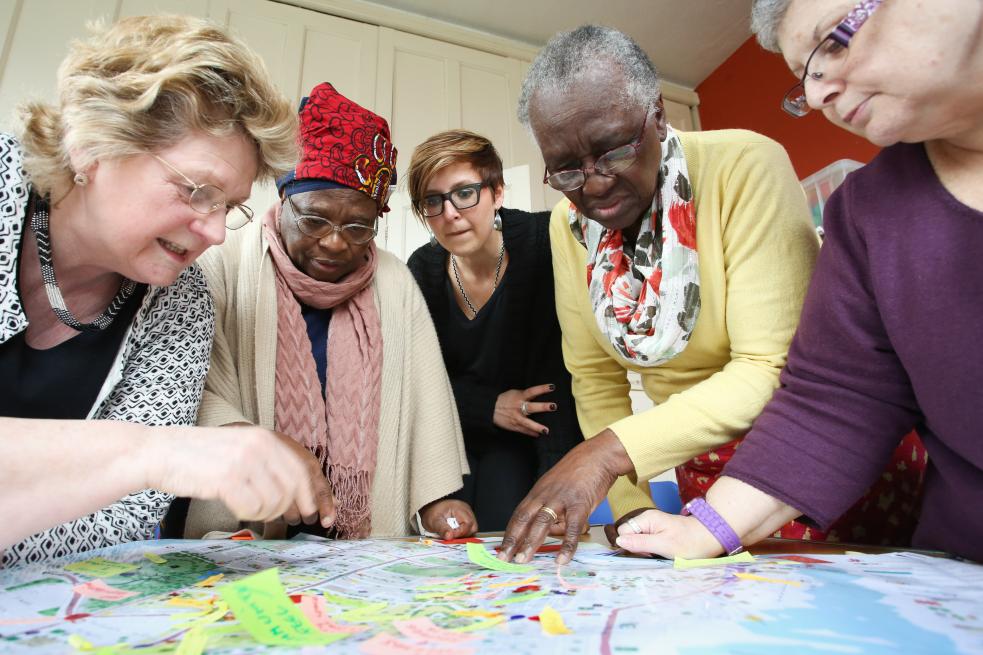A quick guide to developing high quality public engagement
How to get started in developing high quality practice.
Introduction
Defining quality engagement is hard because engagement takes so many different forms and will always be shaped by the specific context in which it is being done. But we have identified four broad key principles that can help ensure that you are developing thoughtful, purposeful engagement that is appropriate to the needs and interests of all those involved.
Purpose: Know your purpose – what can public engagement achieve?
People: Know what you are engaging with and take account of their situation, needs and interests.
Process: Ensure that your engagement approach reflects your purpose and the needs and interests of the people you are engaging with.
Evaluation: Use evaluation both to inform and to assess the value of your work.
We also touch on some other important considerations including project planning.
Understand your public
Understanding the people you want to engage with is critical if you want to develop high quality engagement work. However you will also want to consider your partners, and the team of people who will be working with you to deliver your project.
- Publics: Whilst the temptation is to target the ‘general public’, this can be unhelpful. Being more specific about the people you hope will participate in an engagement project helps you consider what they need, what they might want, and why they might want to engage with you. It also helps you develop effective marketing.
- Your partners: Lots of engagement is done in partnership with others. Sometimes the partner organisation is also the participant in the engagement activity, sometimes they work with you to design and deliver the intervention, and sometimes they offer expert input, access to specific publics, or resources.
- Your delivery team: This might be you but could also include the staff and/or students at the university, or partners you are working with. It is worth considering whether the team have the skills they need to do the work well? Does the activity serve the purposes they have in participating in your activity? What can you learn from them about how the engagement activity could work better?
Process
Design your approach carefully
A common mistake people new to engagement make is to settle on a method without properly thinking through their purpose and the needs and interests of the people they want to engage with.
They will, for instance, decide that they want to create web resources about their research for teachers, without talking to teachers about whether that would be useful, or even researching whether such resources already exist.
Spending some time in a school, talking to teachers and students about the topic and what they find interesting and challenging about it can help to come up with a much more purposeful intervention.
There is a huge repertoire of methods and approaches which you might then draw on to deliver your engagement work. Being aware of different engagement methods, and exploring how other people have deployed them, can help you become a much more creative and well-informed practitioner.
For each of the purposes outlined above, there are a range of methods and approaches you could draw on. For instance, for ‘Listening and learning’ there are lots of tried and tested ways to consult with the public, ranging from focus groups to dialogue processes. For ‘Creating knowledge together’ there are a host of methods ranging from citizen science to co-production. Each requires highly skilled planning and execution, and there are many sources of guidance, inspiration advice that you can draw on, including from Public Engagement Professionals based in your institution.
Evaluation
Quality engagement involves the strategic use of evaluation, but this doesn’t need to be overwhelming. Whilst evaluation can help you measure the impact of your work, it can also contribute to shaping your project, exploring what works well and less well, and to capture whether you achieved what you set out to achieve.
Planning evaluation needn’t be difficult, and there are lots of people and resources who can help. You might want to bring in an external evaluator, or you develop your own approach. Either way you need to think about the aims of the evaluation, the approach to take, the methods utilised, and how the data will be analysed and used.
Final takeaway
The four principles are a great start to ensuring you develop an effective approach, but there are also other considerations including: planning your project well; marketing; ethical practice and resourcing engagement. You can find help with all these on our website.

